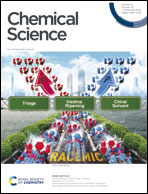Temperature-dependence of radical-trapping activity of phenoxazine, phenothiazine and their aza-analogues clarifies the way forward for new antioxidant design†
Abstract
The prediction and/or rationalization of diarylamine radical-trapping antioxidant (RTA) activity at the elevated temperatures where they are most useful presents a significant challenge, precluding the development of new technology. Whilst structure–activity relationships at ambient temperatures are well established, their predictive capacity at elevated temperatures is poor due to competing reactions. A striking example involves phenoxazine, which is a superior RTA relative to its sulfur analog phenothiazine at ambient temperature (e.g. k = 3.9 × 107vs. 7.6 × 106 M−1 s−1 at 37 °C, respectively), but is demonstrably inferior at elevated temperatures. Despite being inherently less oxidizable in electrochemical experiments and high-accuracy computations, phenoxazine is more rapidly consumed than phenothiazine in autoxidations at 160 °C – a result which we attribute to a lower reorganization energy barrier to oxidation. Given these observations, we surmised that incorporation of an electronegative N-atom into the phenoxazine ring system would decrease the driving force for oxidation and ‘rescue’ its activity. Indeed, this was found to be the case for nitrogen incorporation at any position, regardless of the impact on the inherent RTA activity. Analogous experiments were carried out on phenothiazines into which nitrogen atoms were incorporated, revealing little benefit at 160 °C. These results suggest that for highly reactive diarylamines (i.e. those with k > 106 M−1 s−1), further enhancements in reactivity do not materially improve their ability to inhibit hydrocarbon autoxidation at elevated temperatures. Instead, their stability to one-electron oxidation determines their efficacy.



 Please wait while we load your content...
Please wait while we load your content...